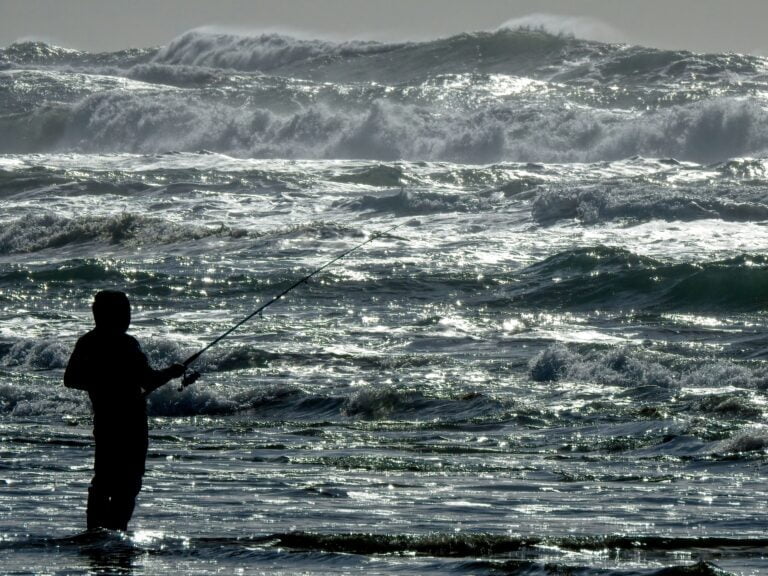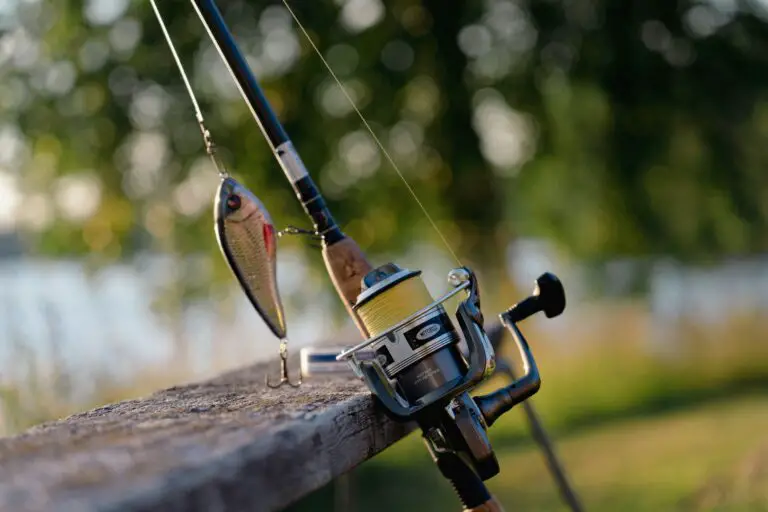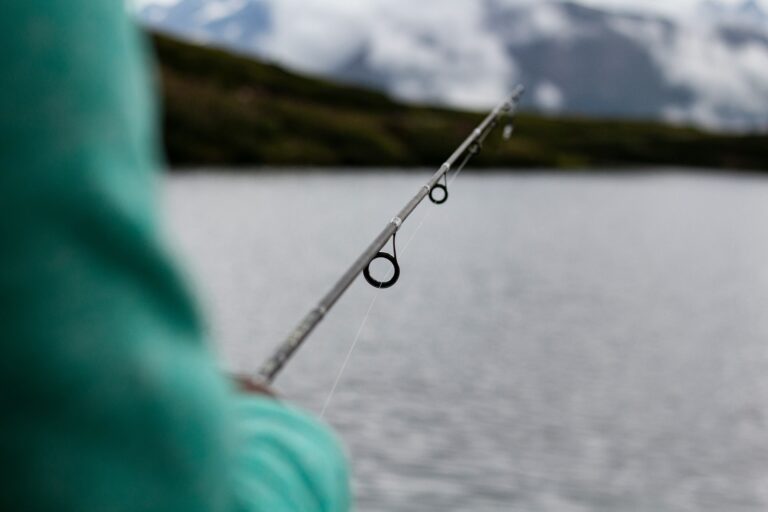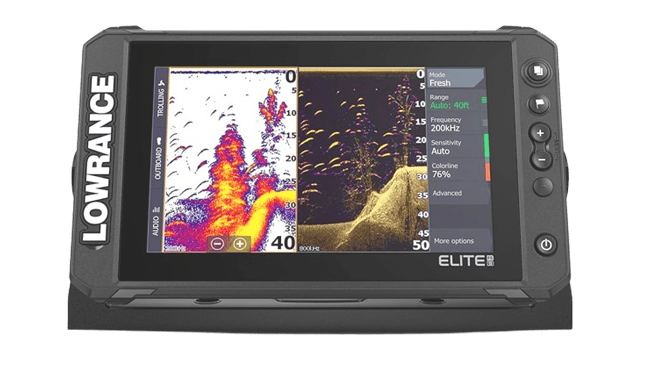Fish Finder with Down Imaging and Side Imaging 2024

If you fish as often as I do, from time to time, locating fish ought to feel like looking for a needle in a haystack.
Fishfinders have revolutionized the technique of locating fish, and due to this, there may be no problem available.
In this newsletter, we’ll discover approximately fishfinders with down imaging and problem imaging, helping you appreciate how that tool can enhance your fishing enjoyment.
Fish Finder with Down Imaging and Side Imaging 2024
Here are a number of great fish finders who will use down imaging and side imaging in 2024.
- Humminbird APEX 13 MEGA SI+ Fish Finder/GPS Chartplotter: Known for its fantastic screen pleasure and powerful imaging talents, this version is distinctly endorsed for severe anglers.
- Lowrance Elite FS 9: This price-range-friendly alternative gives a high-quality screen, powerful CHIRP, and each aspect and down imaging.
- Humminbird SOLIX 12 CHIRP MEGA SI+ G3 Fish Finder/GPS Chartplotter: A more low-cost alternative from Humminbird, still offering super imaging and functions
- Garmin ECHOMAP Ultra 126sv: This version is praised for its superior touchscreen and improved SideVu imaging.
- Lowrance HDS LIVE 12 Fish Finder/Chartplotter: Known for its superior features and great imaging
- Garmin Striker Vivid 9sv: A stable choice for those looking for reliable imaging and performance
- These fashions have a whole lot of features and pricing degrees, permitting you to pick out one that meets your demands and price range. Do you have any precise needs or options in your fishfinder?
What is a fishfinder?
A sonar-based tool that locates fish underwater is called a fish finder. Fish finders work by listening for echoes produced by sound waves and decoding the more potent echoes to provide an image of what is below the surface.
Over the years, the gadgets have significantly improved, presenting extra superior competencies to make our fishing trips extra interesting.
Must Read: How to Hook Up A Fish Finder 2024
What is the difference between down imaging and side imaging?
Here’s an explanation of the distinction between down imaging and side imaging:
Down Imaging
Also referred to as “down scan,” down imaging gives you a close-up look underneath your boat. It creates a high-resolution image of the fish, structures, and underwater environment just below the transducer using a narrow beam.
Benefits
displays submerged objects, vegetation, and fish close to the bottom.
ideal for identifying drop-offs, ledges, and sunken structures.
provides a clear image of the water column directly under your boat.
Limitations
limited coverage area directly beneath the boat.
less effective in deeper water.
Side Imaging
“Side scan,” another name for side imaging, provides a broad perspective of the regions on either side of your boat. It projects beams in order to provide finely detailed photographs of the undersea terrain on both sides.
Benefits
covers a large area to the sides (up to 200 feet or more).
excellent for locating fish, submerged trees, rocks, and other structures away from the boat.
helps map out the entire underwater environment.
Limitations
It doesn’t show the water column directly beneath the boat.
requires some interpretation due to the extensive coverage.
Summary
Down imaging focuses on the area directly beneath your boat, whereas side imaging provides a more thorough view of the areas to the sides. To get a full perspective of the underwater environment, anglers often combine the two devices.
The Ultimate Guide to Fish Finder with Down Imaging and Side Imaging 2024
Certainly! If you’re seeking out a fish finder with both down imaging and side imaging skills, here are some top alternatives:
Humminbird APEX 13 Mega SI+ Fish Finder/GPS Chartplotter

Best Overall: Equipped with a 13. With a 3-inch display, superb decision (1920 x 1080), and diverse frequencies (CHIRPWide Mode, Mega DI+, 800 kHz SI+), this version offers extraordinary aspect scanning at as much as 800 feet (455 kHz) and 500 feet (MEGA). It’s also able to attain depths of 3,500 feet (optionally available with the Airmar CHIRP) and 250 feet (MEGA).
Transducer Angles: 20°, 42°, 60°, (2) 86°, and (2) 55° @ -10 dB.
GPS and Maps: Yes.
Lowrance Elite FS 9
Best Budget Choice: While lower priced, the Elite FS 9 nonetheless presents solid overall performance. It features down imaging and is suitable for anglers in a price range.
Humminbird SOLIX 12 CHIRP MEGA SI+ G3 Fish Finder/GPS Chartplotter
Another top-notch desire from Humminbird, the SOLIX 12 gives CHIRP MEGA SI+ imaging and a 12-inch show.
Remember that down imaging is particularly useful for deep-water fishing, while facet imaging offers a broader view of underwater structures. Choose the only one that is exceptional and fits your fishing fashion and alternatives!
Understanding the imaging technology
The imaging technology in fishfinders is to be used in a prolonged manner, making it much less complicated for us to visualize the underwater world. Down imaging and trouble imaging are two of the most superior competencies to be had.
They permit us to study specific images of what’s right now beneath and beside our boats, providing a clearer image of where fish are, in all likelihood, hiding.
3-D imaging era
Down imaging works with the aid of sending excessive-frequency sonar waves into the water. This technology offers us a clean and top-notch view of the structures and fish suddenly under our boat. The images are almost picture-like, permitting us to differentiate amongst fish, plant life, and the lake or riverbed.
Down imaging is especially beneficial when we’re fishing in deeper waters or looking for fish, which can likely be hiding near the bottom.
Side Imaging Technology
Side imaging, however, scans the water at some point on the edges of our boat. It uses an in-depth beam to cover a larger region, giving us a massive view of the underwater landscape.
This technology is high-quality for exploring new areas and figuring out systems like submerged timber, rocks, or drop-offs in which fish are probably lurking. Side imaging lets in our capability to find out fish without stressing them, as we don’t want to skip them.
Down imaging vs. side imaging
While every technology is beneficial, it also has unique competencies. Down imaging is awesome for particular, vertical views, making it a bargain and a lot less tough to be aware of fish right away. Side imaging, however, gives a far-wider idea set, assisting us in locating fish in a larger vicinity.
Depending on our fishing surroundings and goals, we’d choose one over the other or possibly use them in combination for fantastic effects.
Top Fish Finders with Down Imaging and Side Imaging
There are several top-notch fishfinders available on the market that offer both down imaging and issue imaging. Some of the pinnacle fashions embody the Humminbird HELIX 7, Garmin Striker 7SV, and Lowrance HDS Live.
These models offer excessively unique competencies, guy- or woman-extremely good interfaces, and, in addition, successful abilities like GPS and mapping. When choosing a fish finder,.
it’s crucial to don’t forget the crucial capabilities that depend the most on us, which embody display length, frequency range, and connectivity alternatives.
How to Choose the Right Fish Finder for You
It can be difficult to choose an awesome fishfinder, but if we do not forget a few vital factors, we’re capable of making an informed choice.
First, replicate our fee variety and what we’re willing to spend. Next, keep in mind the fishing environments we have encountered, whether or not they are deep lakes, shallow rivers, or coastal waters.
Our potential, degree, and luxury with the generation can also play a role in our desire. Reading client critiques and seeking out professional suggestions can offer valuable insights.
Installation and Setup Tips
Installing a fishfinder can also seem daunting; however, with a little guidance, we are capable of doing it ourselves. Start with the beneficial resource of selecting the proper area for the transducer, ensuring it’s set up securely and in a gap that avoids turbulence.
Follow the producer’s instructions for wiring and setup. Once mounted, calibrate the unit and modify the settings for maximum traditional overall performance. Avoid uncommon mistakes like wrong mounting or ignoring software program software updates.
Maximizing Your Fish Finder’s Potential
To get the most out of our fishfinder, we need to discover ways to interpret the down-and-factor imaging facts. Pay attention to the shapes and shadows on the show, as they’ll endorse fish or structures. Experiment with unique settings to see what works nicely in several conditions.
Combining imaging data with specific sonar talents, like CHIRP, can provide us with greater records about our underwater environment.
Maintenance and troubleshooting
Regular safety is critical to keeping our fishfinder in top form. Clean the transducer frequently and check it for any signs of harm or tear. Ensure all connections are strong, and update the software program as wished. If we come across troubles like a horrible picture or a lack of signs and symptoms,.
We look for suggestions from the patron manual for troubleshooting recommendations. Don’t hesitate to look for professional help, if desired, because proper safety can extend the lifespan of our gadgets.
Conclusion
Fishfinders with down imaging and problem imaging can considerably decorate our fishing revelry, providing us with unique insights into the underwater world.
By knowing how generation works and how to use it correctly, we are able to develop our possibilities of falling nicely into an achievement entice. I need this guide to be useful, and I want to encourage you to pick out the proper fish finder based mostly on your desires and take your fishing adventures to the next level.
Call to Action
I’d like to pay attention to your research with fishfinders. Feel free to share your reminiscences or ask any questions during the feedback phase. Don’t forget about the possibility of subscribing for delivered tips and guides on fishing!
FAQs About Fish Finders with Down Imaging and Side Imaging
What is the distinction between down imaging and aspect imaging?
Down Imaging: This era sends sonar waves without delay beneath the boat, supplying specific, image-like pictures of the underwater surroundings. It’s ideal for seeing what’s right below you, in conjunction with fish, plants, and the lake or riverbed.
Side Imaging: This era scans the water to the edges of the boat, offering an in-depth view of the underwater landscape. It’s perfect for exploring massive regions and identifying systems like submerged wood, rocks, and drop-offs.
Which is better, down imaging or element imaging?
Both technologies have their benefits. Down imaging is better for unique vertical views, making it less difficult to emerge aware of fish right away beneath the boat. Side imaging gives a broader attitude, helping you find fish in a bigger region. The pleasant choice depends on your fishing surroundings and specific wishes.
Can I use down imaging and facet imaging simultaneously?
Yes, many gift-day fishfinders will let you use down imaging and factor imaging concurrently. This combined method gives a complete view of the underwater surroundings, increasing your chances of finding fish.
How do I interpret the pictures on my fishfinder show?
Interpreting fishfinder snap shots can take a few physical games. Pay attention to the shapes and shadows on the display; fish generally seem as arches or dots, while structures like rocks and flowers need to have extra-defined shapes. Experimenting with particular settings and spending time in the water will improve your ability to take a look at Pix correctly.
What are the superb fishfinders with down imaging and facet imaging?
Some of the pinnacle fish finders with both down imaging and thing imaging encompass the Humminbird HELIX 7, Garmin Striker 7SV, and Lowrance HDS Live. These fashions provide excessive-decision images, customer-great interfaces, and extra functions like GPS and mapping.
How do I deploy a fish finder?
Installation consists of mounting the transducer, connecting the electricity and show devices, and configuring the settings. Choose an area for the transducer that avoids turbulence, observe the manufacturer’s commands for wiring, and calibrate the unit for top-of-the-line basic performance. Many manufacturers offer particular set-up guides as a way to guide you through the method.
How do I maintain my fishfinder?
Regular maintenance includes cleansing the transducer, checking for positioned-ons or damage, making sure all connections are robust, and updating the software. Proper preservation will help extend the lifespan of your fishfinder and make sure it plays optimally.
What should I do if my fishfinder isn’t on foot?
If you encounter troubles, begin by consulting the consumer’s manual for troubleshooting tips.Frequent issues can often be fixed by checking connections, recalibrating the device, or updating the software. If the difficulty persists, we are looking for expert help from the manufacturer or a certified technician.
Are fishfinders truly worth the funding?
Absolutely! Fishfinders can drastically decorate your fishing revel by presenting unique insights into the underwater surroundings. They help you discover fish more efficaciously, saving you time and increasing your chances of achievement.







One Comment